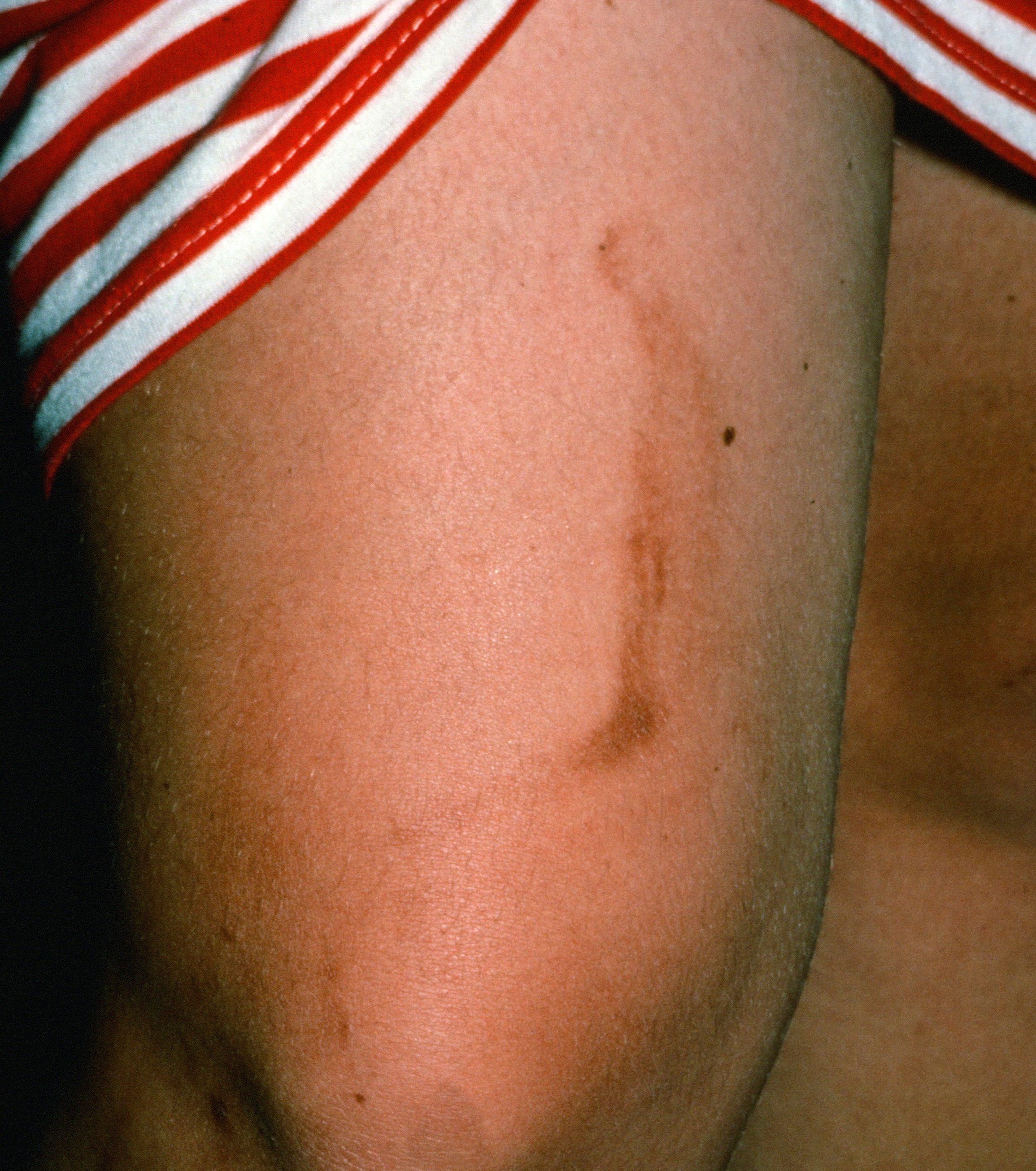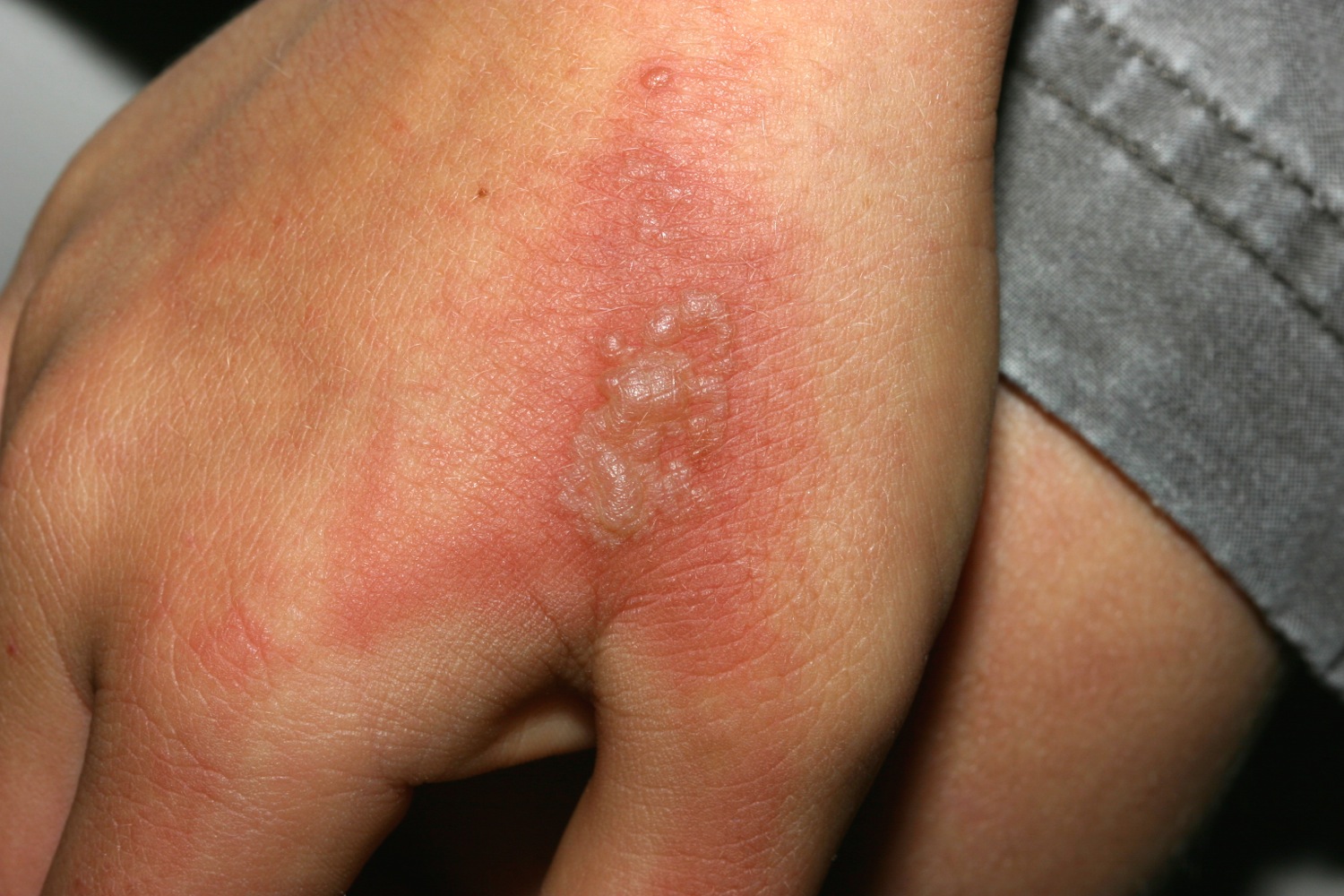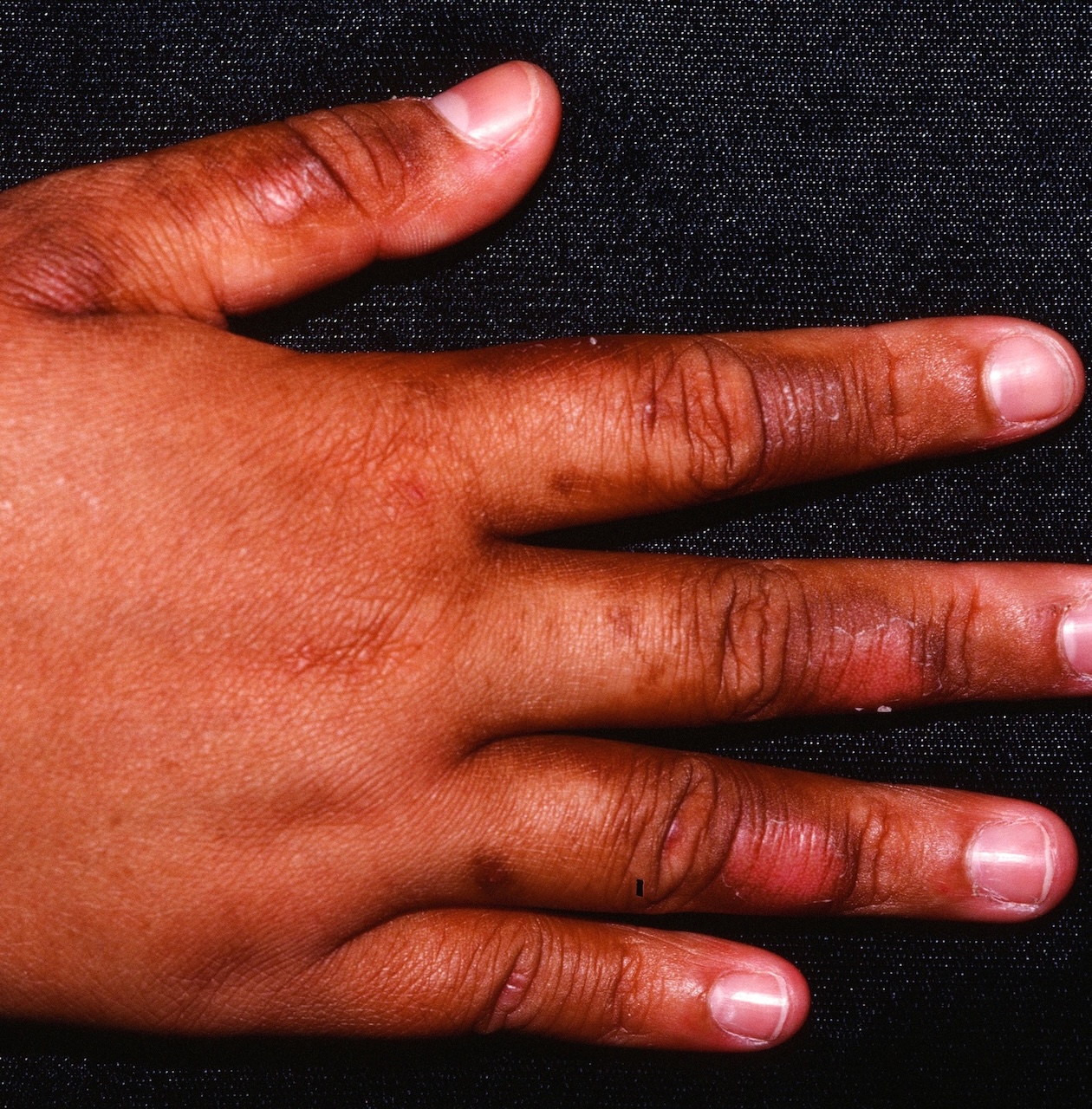
A teen after a day at the beach.
PHYTOPHOTODERMATITIS
Phytophotdermaititis is a type of phototoxicity (in contrast to a photoallergy).
- Phototoxicity clinically resembles an exaggerated sunburn. The incidence is comparatively higher, it may occur on the first exposure, the dose of the chemical and ultraviolet radiation are important and the diagnosis is clinical.
- Common causes of phytophotodermatitis include contact with lime, lemon, celery, parsnip, and figs.
- Some patients develop this after using lime or lemon juice applied to their hair while out in the sun in an attempt to bleach their hair.
- The most common cause in San Diego (personal observation) is contact with limes on a sunny day. Patients may be at the beach or park and use limes for either drinks or in salads. One child picked limes from a lime tree while playing outside.
- I like to call it "Lime Disease"!
- Fig leaf application to the feet has been used as a home remedy for onychomycosis, psoriasis, eczema and other complaints of the feet. The patients then go out in the sun and develop a severe sunburn/blistering.
Clinical
The area is like a burn. Redness, pain and inflammation develop hours to 1-2 days after exposure. Within a few days, the area takes on a red/brown color.

Streaky, haphazard brown patches are typical.

The dorsal hand and in severe cases, blistering are typical.

Squeezing limes and then going out in the sun.
RegionalDerm
Homepage | Who is Dr. White? | Privacy Policy | FAQs | Use of Images | Contact Dr. White
It is not the intention of RegionalDerm.com to provide specific medical advice, diagnosis or treatment. RegionalDerm.com only intends to provide users with information regarding various medical conditions for educational purposes and will not provide specific medical advice. Information on RegionalDerm.com is not intended as a substitute for seeking medical treatment and you should always seek the advice of a qualified healthcare provider for diagnosis and for answers to your individual questions. Information contained on RegionalDerm.com should never cause you to disregard professional medical advice or delay seeking treatment. If you live in the United States and believe you are having a medical emergency call 911 immediately.




